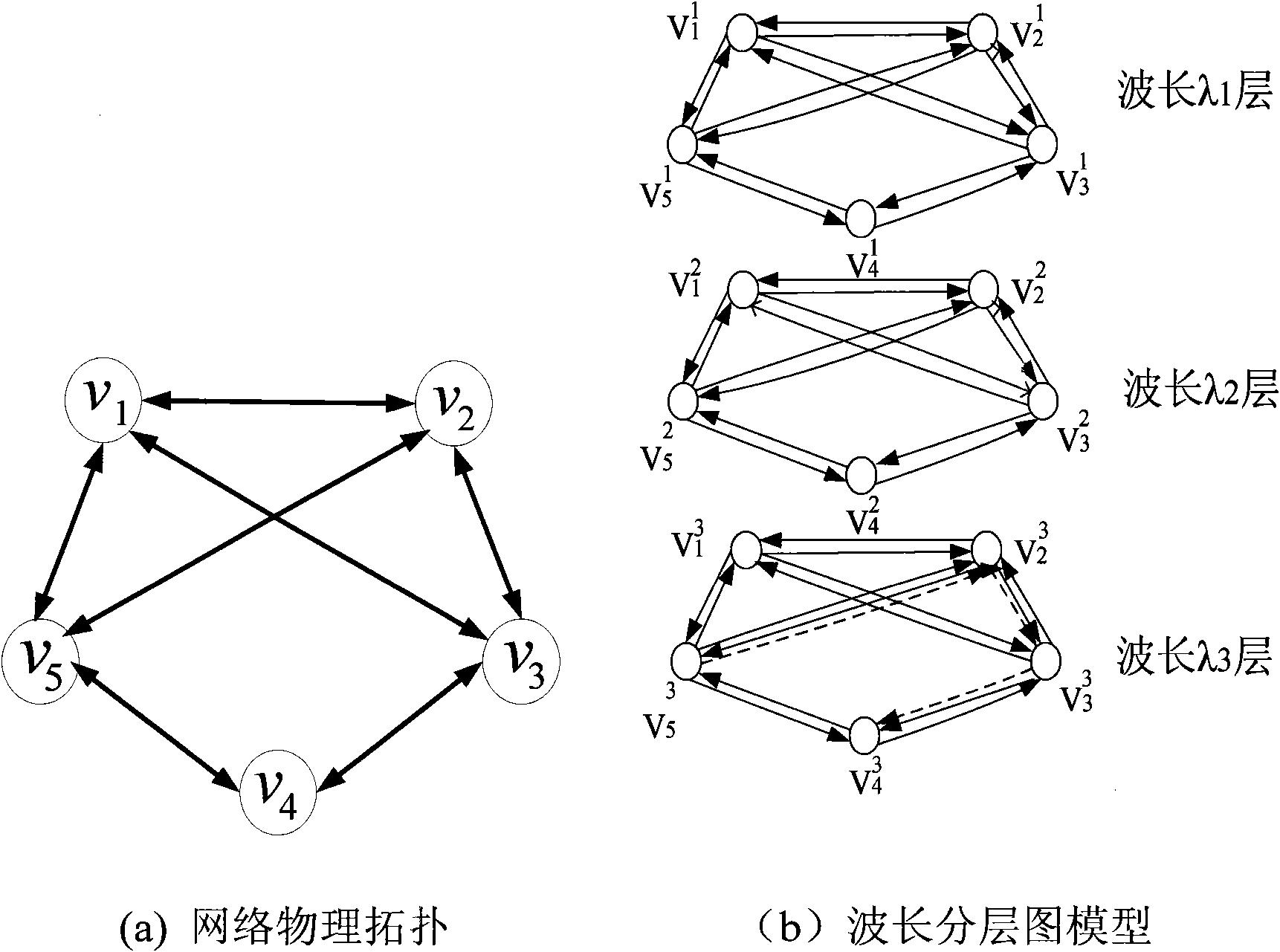Static routing and wavelength allocation method based on layered graph
A wavelength allocation and hierarchical graph technology, applied in the field of communication, can solve the problems of incomparable algorithm superiority and high complexity of static RWA algorithm, and achieve the effect of reduced computational complexity and less resources
- Summary
- Abstract
- Description
- Claims
- Application Information
AI Technical Summary
Problems solved by technology
Method used
Image
Examples
Embodiment Construction
[0018] In order to avoid defects such as high computational complexity in the existing static service routing and wavelength allocation methods, or the need to split the static RWA method, the present invention uses a layered graph method to solve the static service routing and wavelength allocation problems. Let the network topology be G(V, E, W, F), where V represents the set of nodes, E represents the set of bidirectional links formed by two optical fibers, W is the number of wavelengths contained in each optical fiber, and F is the number of wavelengths in the network. The total number of wavelengths used by the service.
[0019] According to the formula Determine the total number of wavelengths used F, where, according to the formula Determine whether a new wavelength is used. According to the formula The maximum number of links that a routing request passes is h=|L|-1, and L is the number of links in the network. According to the formula Limit the maximum number...
PUM
 Login to View More
Login to View More Abstract
Description
Claims
Application Information
 Login to View More
Login to View More - R&D
- Intellectual Property
- Life Sciences
- Materials
- Tech Scout
- Unparalleled Data Quality
- Higher Quality Content
- 60% Fewer Hallucinations
Browse by: Latest US Patents, China's latest patents, Technical Efficacy Thesaurus, Application Domain, Technology Topic, Popular Technical Reports.
© 2025 PatSnap. All rights reserved.Legal|Privacy policy|Modern Slavery Act Transparency Statement|Sitemap|About US| Contact US: help@patsnap.com



